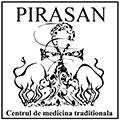Thrombophlebitis is an affection of the cardio-vascular system, manifested by the inflammation of the venous walls and by the formation of blood clots (thrombi) obstructing partially or completely the veins and causing embolism (the sudden obstruction of a blood or lymphatic vessel). The inflammation of the blood vessels may be prior to the formation of thrombi or caused by the formation of thrombi by intravenous clotting.
Thrombi or the inflammation of the venous walls may occur in any part of the circulatory system. However, in most of the cases, thrombophlebitis is located in the lower limbs. At the onset, it affects the veins of the calf and after that the veins of the femur and those of the iliac area.
Main Forms of Manifestation
The venous circulatory system has superficial subcutaneous ramifications and profound muscular ones. The affected veins define the thrombophlebitis type, whether it is superficial or profound. In the first case, the thrombi are situated on the walls of the subcutaneous veins and cause the inflammation of the affected veins. Under touch they feel like a hard and painful cord. The patient complains of discomfort and pain when walking and resting, as well as of local pangs. The superficial thrombophlebitis does not pose an immediate threat for the patient. However, in particular situations, the obstructed veins may generate infections or deterioration of the near tissue because of the impended peripheral circulation.
The obstruction of the muscular veins, a condition called profound thrombophlebitis, is a major risk for the patient’s health, as the thrombi may fall off the venous wall and they may cause pulmonary embolism, myocardial infarction or brain stroke. As manifestations, we notice spontaneous pains in the calf or in the plantar muscles; a raise in the local temperature and a feverish state; stiff walk and limping; anxiety and tachycardia. A particular manifestation of this disease is the varicose thrombophlebitis, caused by complication of the varices.
Causes
The formation of thrombi or the inflammation of the veins has many causes. The most frequent one is the prolonged inactivity, as it happens in the case of long car or plane trips or in the case of the diseases keeping the patient immobilized at bed (post surgery recovery, myocardial stroke, fractures, paralysis caused by a brain stroke etc). Among the risk factors, there can be mentioned the following:
- Certain types of cancer (the pancreatic cancer raises the level of procoagulants in the blood)
- Pregnancy and childbed (they raise the artery tension in the lower limbs and the pelvic area).
- Administration of a hormone-based medication or of contraceptives (they raise the level of the clotting substances in the blood).
- Varices (the thrombi may grow in the superficially dilated veins, causing the superficial thrombophlebitis)
- Physical traumas in the veins
- Vein infections
- Obesity
- Smoking
- Thrombophlebitis history in other members of the family
- Hepatic and splenic dysfunctions
- Disorders of the endocrine system (adrenals, ovaries, thyroid).
Although the varices favor the occurrence of thrombi, they are also a complication of the thrombophlebitis. The edema (accumulation of liquid in the lower limbs), the cutaneous ulcerations and the complete obstruction of the affected vein are also serious manifestations of thrombophlebitis. The heart stroke, the pulmonary embolism and the brain stroke are also severe complications.
Prevention Methods
If taking long duration trips, are recommended leg-stretching exercises or, if possible, several-minute walks. Hidration is essential in preventing the thrombi formation. Therefore it is recommended not only during trips but also during the daily activities (especially if your professional activity is a sedentary one). Avoid wearing tight clothing around your waist or the socks too tight on the calf.
Treatment
The evolution of the disease is arrested by treating simultaneously the causes and the already born lesions. Acupunctureand phytotherapy oxygenate and repair the venous wall; they dissolve the local thrombus and at the same time they prevent its migration into the body (thus the possibility is also eliminated of giving birth to pulmonary, cerebral or cardiac embolism).
Where there is an external context for formation of thrombi (for instance persons displaying risk factors, who have to take a plane trip), the patient will be informed about prevention methods; he will also be given herb treatment for the trip in order to prevent the formation of thrombi. According to the given diagnosis, the doctor will try to eliminate the inner causes: decreasing the blood pressure, restoring the hepatic and the splenic balance, curing the endocrine disorders etc. The activation of certain energy centers by means of acupuncture needles will lead to recovery of the tissue and restoration of the local metabolism, a phenomenon supported and enhanced by the active substances in the herbs. The herbs also restore the local blood circulation and intensify the oxygenation processes. Moreover, they help restore the local blood flow and movement, because, once it is inflamed, the venous wall causes micro turbulences locally in the blood circulation.

